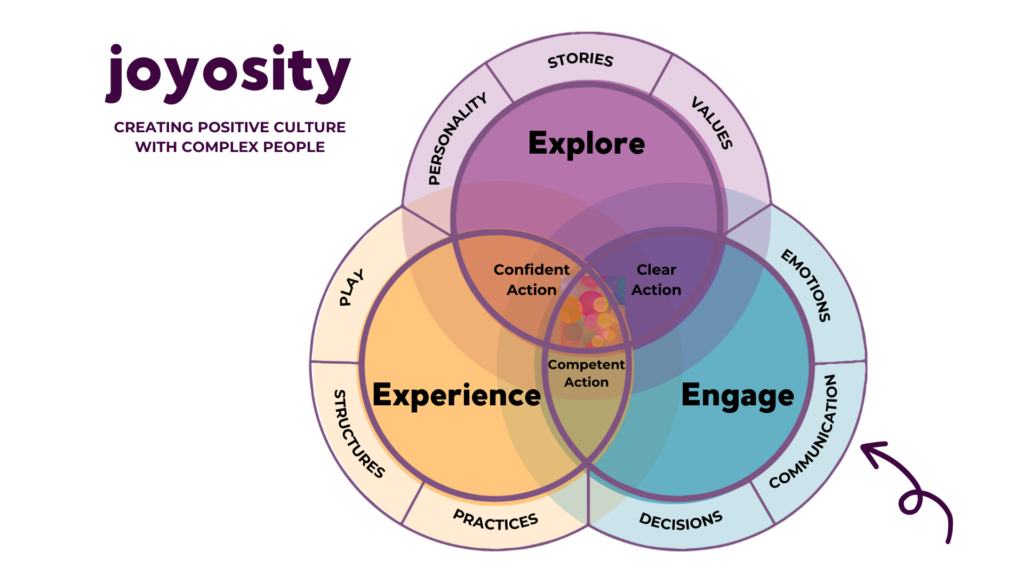“What do you mean you’re in Illinois?” I blurted out.
Michael’s voice came through my airpods, “That’s where the car was. In O’Fallon.”
I huffed a laugh and slapped my forehead. My husband and son were looking for a used car for our family, and I’d been sending him other cars to look at that were close to where he was already driving. All the time, I thought my husband and son were in O’Fallon, Missouri.
O’Fallon, Missouri, and O’Fallon, Illinois, are an hour away from each other.
We fell headlong into the cause of 86% of conflicts — miscommunication.
Even logical assumptions (like which O’Fallon you’re going to based on a previous conversation) can cause friction and frustration for you and all your relationships.
In this conversation with Michael, I forgot my own model of CLEAN communication (more on that in a bit).
One of the primary engagement and leadership skills you need is great communication. After accurate self-awareness, communication comes in a close second to the top skills you need as a healthy and effective leader.

I see many leaders who mistake communication for telling people things, talking a lot, or just making themselves heard. That’s not the goal.
The goal of communication is shared meaning.
The CLEAN framework will help you create shared meaning, stopping miscommunication before it starts.
- Clear
I know it’s shocking, but the other people in your life can’t read your mind! They can’t know what you want, what you see as the goal, or how you see the process until you make it clear. “Clear is kind,” is one of my favorite Brené Brown sayings. Begin by being as clear as you can. Share your expectations fully and specifically. Visualize painting a picture of done, not a connect-the-dot. - Listen with Curiosity
Curiosity changes how we listen. Not just waiting for your turn to talk, but back to trying to understand the other person as you work together to create shared meaning. If you’ve been with me a bit, you know I love Ted Lasso (if you’re new to me, welcome. I love Ted!) In one of my favorite episodes, Ted says, “If they were curious, they would have asked questions.” Here are two Qs to try in conversation: “What questions do you have?” “Is there anything unclear for you?” And pro tip: you have to wait for the answer. Literally count at least to 8 if not 12 in your head. It will feel like an eternity at first, but it communicates you actually want people to consider and answer you. - Emotional Regulation
We are feeling beings who think. Not the other way around. Emotions are important data points for creating any shared meaning. When we ignore emotions, we are likely to make poor decisions and miscommunicate even more. Practicing emotional regulation means recognizing and naming emotions, but not allowing those emotions to take over. Visually, we don’t want the tsunami of emotions. We want a canal. - Absorbing stories
We are wired for stories. Stories are actually how we see and understand the world. When you are giving examples or sharing data, use a story. The story doesn’t have to be amazing, just real. You can use a story of your own (like this car-buying miscommunication!), a client’s story, or even a great fable. A story will stick with people more than any data or bullet points. - Nonverbal alignment
As humans, we believe the body over words every time.
Would you believe this person if he said, “I’m so happy you’re here!” Of course not! So when you are trying to create shared meaning, your body also needs to match that curious posture. The two best things you can do: relax your shoulders and face the person without a barrier. Without a barrier means put your phone away. If possible, try to remove a laptop between you. At times that’s not possible, but try to position your body so there is open space between you and your conversational partner.
In this MO’Fallon/O’Fallon fiasco, I forgot about curiosity. I just assumed where they were. So in that moment of revelation, I changed my approach. I used curiosity and started asking questions! And Michael pulled off on an exit so he could focus, a form of nonverbal alignment. We both got clear on the goal: find this black Santa Fe at Lou Fusz on Olive. If it checks out, buy it. Michael had already told me the story of their misadventure to the car lot and the car wasn’t there. So I shared I was afraid that they would show up at Lou Fusz and the car wouldn’t be there — emotional regulation. So we decided I would call ahead to confirm everything while they were driving the 30 minutes to the dealership.
That CLEAN communication got us to the goal with less wasted time and much more ease and joy. Meet Jack Kelly, our Santa Fe.

Communication doesn’t just happen by saying what’s inside your head or even listening to someone else. It’s a back-and-forth of co-creation. What are you creating? Shared meaning!
Imagine for a moment what CLEAN communication could do for you and your team. Or your partner, kids, or parents. How could that create more ease and joy in your work?
Let’s work together to make that happen. Here’s how to start. Which component of CLEAN communication do you think you or your team needs the most? Comment on the blog and let me know. I’ll reply with a few more tips to help you.

[…] Communication is the primary engagement skill we use to get anything done. Which is why communication is a necessary skill for each and every leader. […]